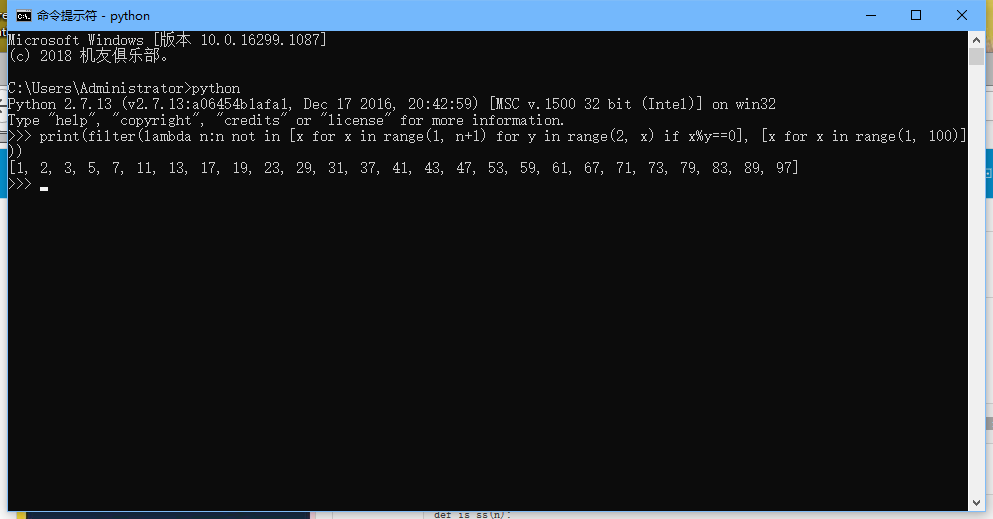Python内建的filter()函数用于过滤序列。
和map()类似,filter()也接收一个函数和一个序列。和map()不同的时,filter()把传入的函数依次作用于每个元素,然后根据返回值是True还是False决定保留还是丢弃该元素。
例如,在一个list中,删掉偶数,只保留奇数,可以这么写:
def is_odd(n): return n % 2 == 1 filter(is_odd, [1, 2, 4, 5, 6, 9, 10, 15]) # 结果: [1, 5, 9, 15]
把一个序列中的空字符串删掉,可以这么写:
def not_empty(s): return s and s.strip() filter(not_empty, ['A', '', 'B', None, 'C', ' ']) # 结果: ['A', 'B', 'C']
